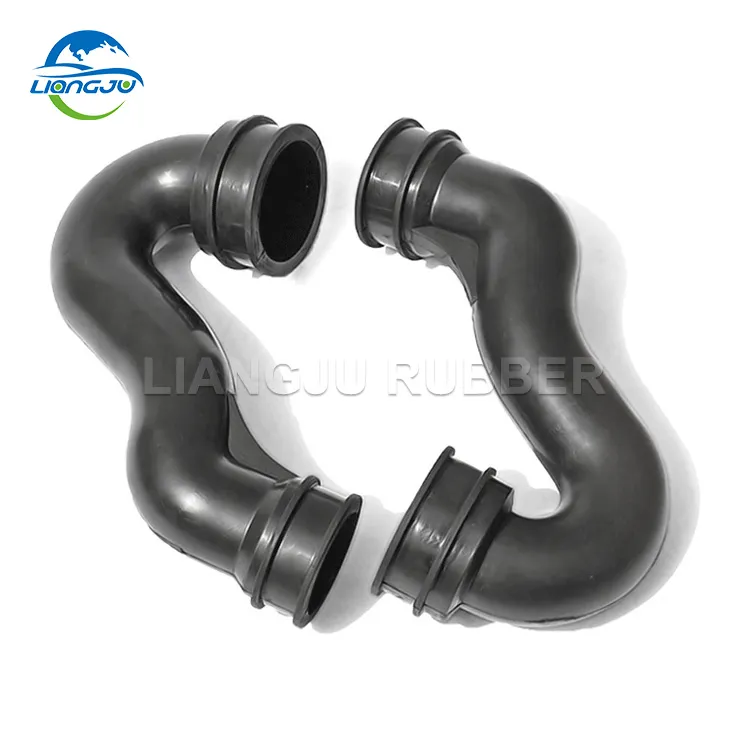Understanding the Versatility and Applications of Rubber Hoses
2024-07-27
Introduction
Rubber hoses are ubiquitous in various industries due to their flexibility, durability, and resistance to a wide range of substances. From automotive to industrial applications, rubber hoses play a crucial role in transferring liquids, gases, and even solids. In this blog, we will explore the versatility and diverse applications of rubber hoses, highlighting why they are indispensable in many fields.
The Basics of Rubber Hoses
1. Composition and Structure
Rubber hoses are typically made from natural or synthetic rubber compounds, which offer excellent flexibility and resilience. They consist of three main layers:
- Inner Tube: This layer is designed to be resistant to the fluid or gas being conveyed.
- Reinforcement: Often made of braided textile or metal wire, this layer provides strength and flexibility.
- Outer Cover: This protective layer shields the hose from environmental factors such as abrasion, ozone, and chemicals.
2. Types of Rubber Used
Different types of rubber are used based on the specific requirements of the hose:
- Natural Rubber (NR): Known for its high elasticity and abrasion resistance.
- Nitrile Rubber (NBR): Excellent oil and fuel resistance.
- EPDM Rubber: Superior resistance to heat, ozone, and weather conditions.
- Silicone Rubber: High-temperature tolerance and flexibility.
Key Applications of Rubber Hoses
1. Automotive Industry
Rubber hoses are vital in the automotive sector, used in:
- Radiator Hoses: Carry coolant to regulate engine temperature.
- Fuel Hoses: Transfer fuel from the tank to the engine.
- Brake Hoses: Convey brake fluid to ensure proper braking function.
- Air Intake Hoses: Deliver air to the engine for combustion.
2. Industrial Applications
In industrial settings, rubber hoses are used for:
- Chemical Transfer: Safely handling corrosive chemicals.
- Hydraulic Systems: Transmitting hydraulic fluid under high pressure.
- Air and Gas Transfer: Supplying air or gases in pneumatic systems.
- Water and Steam: Conveying water and steam in various processes.
3. Agriculture
Rubber hoses are essential in agriculture for:
- Irrigation: Distributing water to crops.
- Pesticide Application: Safely delivering pesticides and fertilizers.
- Milking Systems: Transferring milk in dairy operations.
4. Construction and Mining
In construction and mining, rubber hoses are used for:
- Concrete Pumping: Transporting wet concrete to construction sites.
- Dust Suppression: Delivering water or chemicals to control dust.
- Ventilation: Providing fresh air to underground workers.
5. Food and Beverage Industry
Specialized rubber hoses are used in food and beverage processing to:
- Transfer Liquids: Safely convey milk, juice, and other liquids.
- Cleaning: Deliver cleaning solutions and water for sanitation.

Advantages of Rubber Hoses
1. Flexibility and Bendability
Rubber hoses are highly flexible and can bend easily without kinking, making them ideal for applications requiring movement and flexibility.
2. Durability
Rubber hoses are known for their long-lasting performance, even under harsh conditions. They resist wear, abrasion, and environmental factors, ensuring reliable operation.
3. Chemical and Temperature Resistance
Depending on the rubber type, these hoses can handle a wide range of chemicals and temperatures, making them suitable for diverse applications.
4. Customizability
Rubber hoses can be manufactured in various sizes, lengths, and configurations to meet specific requirements, offering great versatility.
Conclusion
Rubber hoses are indispensable tools across numerous industries, thanks to their versatility, durability, and excellent performance characteristics. Whether in automotive, industrial, agricultural, construction, or food processing applications, rubber hoses provide reliable solutions for transferring fluids and gases efficiently. Understanding their applications and advantages helps in selecting the right hose for the job, ensuring optimal performance and longevity.


